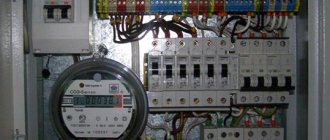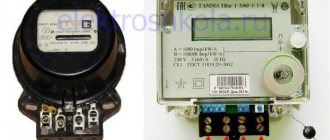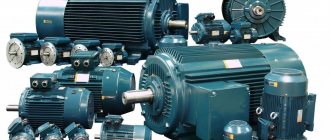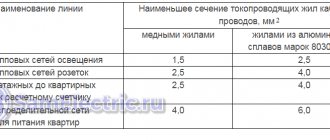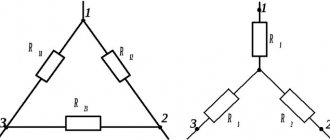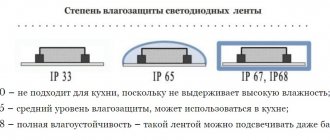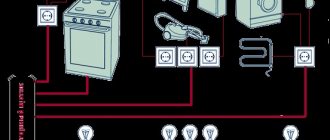How many machines should be in an apartment or house?
When carrying out an electrical wiring project, it is very important to pay due attention to safety. The safety of the electrical wiring itself, as well as people and property, will depend on the correct design.
To ensure proper protection of electrical wiring, circuit breakers are now used instead of plugs. There may be several of them in an apartment, but the most important one is at the entrance, next to the electric meter.
However, to increase the protection of electrical wiring, many install a dozen or even more circuit breakers. How many should there really be? How to correctly determine the number of machines per house or apartment?
General information
The circuit breaker has two types of protection:
- Provides short circuit protection for wiring. As a result, the currents in the line increase sharply, overheating of the conductors occurs with melting, and if the currents are exposed for a long time, then with a fire. This leads to fire, loss of material assets and creates a threat to life.
- Protects the line from prolonged exposure to currents higher than rated (overload protection). As a result, the wires heat up above the permissible value, more than +65 0C. The insulation begins to melt, a short circuit occurs with the ensuing consequences.
The machine is capable of providing reliable protection of electrical wiring, equipment, property, and is capable of preserving human health and life. But it cannot protect a person from electric shock. For this purpose, RCDs are used.
However, in order for the circuit breaker to reliably protect the line, it is necessary to perform the calculation correctly. The industry produces automatic machines of various designs, single-pole, two-pole, three-pole and four-pole.
The figure shows single-pole, two-pole and three-pole AVs.
Simplified diagram of an apartment panel
This scheme is suitable for small one or two room apartments. Where the total length of all wires and cables does not exceed 300-400m.
There is a load switch at the input, not a circuit breaker. If you already have protection installed on the floor switchboard, after or before the meter ( check this before assembling this circuit ), then it is not necessary to install a machine at the input. The better the load switch from the machine can be found in the article Modular load switch or incoming machine.
The rated current of the input device for apartments with electric stoves and single-phase load should be from 40A and above.
Below are group cables feeding certain groups, indicating the cable brand and its cross-section depending on the load. Outgoing lighting circuits made with a 1.5mm2 cable are protected by a 10A circuit breaker, socket groups with a cross section of 2.5mm2 are protected by 16A.
The bathroom is connected to the differential machine, i.e. sockets, lighting and all consumers in the bathroom are combined into one group. Moreover, the leakage current on the diff is selected to be 10 mA.
Some electricians set it to 30mA, citing possible false alarms. There is no specific prohibition in the rules; it stipulates that this protection should not exceed 30 mA . Why it is still better to set it to 10mA can be understood by familiarizing yourself with how a current of a certain magnitude affects your body:
True, in order to purchase 10mA differential automatics in stores, you will most likely have to place an order. Basically, devices with a leakage current of 30 mA predominate on the free market.
The hob and oven are powered in separate groups, implying that these are two different consumers. If you have an electric stove, that is, when the hob and oven are combined, you need to change the power cable and circuit breaker:
If you are concerned about power outages and want to protect your equipment from power surges, then you can slightly increase the cost of the circuit by adding a voltage relay to the input. Here is a schematic representation of a relay of the UZM-51M brand, as the easiest to connect (input-phase + zero and output-phase + zero).
Calculation of the rating of circuit breakers
When calculating, they are guided by the established load. Based on these considerations, the cross-section of wires and devices that will protect the line are selected.
For example, let's perform line calculations for 3 sockets. It is expected to connect electrical appliances, a 2 kW washing machine, a 1.5 kW microwave and a 0.8 kW electric kettle. The total power is 4.3 kW (4300 W).
Using the formula we calculate the current:
I=P/U,
I= 4300/220=19.54A
(This formula is valid for active loads and is used when designing power supply in an apartment.)
Using the reference tables, select the appropriate wire cross-section. This takes into account the method of laying and the material of the conductor. We choose wiring with copper wires.
From the table below we select the closest value. We take a larger cross-section of copper conductor 2.5 mm2. We will take the values for “laid in a pipe” because hidden electrical wiring is assumed.
The next step is to select a machine that will be installed in the electrical panel. Using the reference table, we select the required circuit breaker.
In practice, a cable with a cross-section of 2.5 mm² is used for sockets. Although the table indicates that with an open gasket, 1.5 mm² will suit us. This is more than what we calculated above, and is due to the fact that the cable is laid in the wall, and not in the open air, as well as the peculiarities of the operation of circuit breakers - they allow currents to pass for a long time 13% higher than the rated one. That is, an AB at 16A will carry current up to 18A for a long time, at 25A – up to 28A, etc.
Below is part of the table, with a number of denominations of industrially produced machines:
We select a 16A circuit breaker. According to calculations, the device should be installed at 19.54 A. But the industry does not produce such devices, so we choose a value lower than the calculated one. In addition, the sockets are designed for a current of 16A, so machines of a higher rating cannot be installed regardless of their number.
It will reliably protect electrical wiring from overload and short circuit currents in an apartment or in a country house. A similar calculation is made when replacing old electrical wiring in a house.
In other cases, when the connection is made not through an outlet, but directly, like an electric stove, for example, the circuit breaker is selected according to the power of the electric stove. In this case, the cable is selected so that the rated current can flow through it for a long time, taking into account losses on the line. It is important to note that the permissible continuous current of the cable of the calculated cross-section must be higher by 13% (or more) than the rating of the circuit breaker on this line, for the reasons indicated above.
Regulatory documents and rules for shields
All diagrams and apartment panels must be assembled in accordance with regulatory documents and not contradict the instructions and rules prescribed there. First of all, this is, of course, the PUE, but there are two more documents that are worth paying close attention to:
- ⚡GOST 32395-2013 Distribution panels for residential buildings. General technical conditions. (download)
- ⚡Code of rules for design and construction SP 31-110-2003 “Design and installation of electrical installations of residential and public buildings” (download)
Requirements from the rules for apartment panels
Notes and requirements from the above GOST that you should pay attention to when assembling and choosing an apartment panel:
Calculation of the number of machines
How to calculate a machine for one line was discussed above. We will calculate the circuit breakers for a 1-room apartment.
The figure below shows a typical circuit for protecting the electrical wiring of a one-room apartment:
It follows from this that individual protection of lines that supply end consumers is used:
- Two AVs are installed that protect the lighting lines in the corridor and room, and the second ensures that the lighting in the toilet, bathroom and kitchen is turned off in an emergency.
- The sockets are protected not only by AB, but also by additional protection on the RCD. It protects a person from accidentally touching live parts of electrical wiring.
- The protection of sockets and washing machines is constructed in a similar way.
- There is a separate circuit breaker for the electric stove.
All devices are installed in the electrical panel. Often it is mounted in the hallway, and an electric meter and an incoming AV are installed on the site.
A 2-room apartment requires more machines. As can be seen from the diagram below.
Six automatic circuit breakers are installed in the switchboard, ensuring that lines are disconnected in the event of a short circuit or overload:
- one AB protects the lighting line of the corridor and both rooms;
- the second is installed to illuminate the kitchen, toilet and bathroom;
- the line that feeds the boiler is separately protected;
- The next circuit breaker provides protection for the sockets in the corridor, room 1, room 2, toilet and kitchen.
Thus, if a fault occurs on one of the lines, it can be easily localized and repaired.
The number of circuit breakers for a 3-room apartment or 4 rooms is calculated in a similar way. In this case, you should select an electrical panel, taking into account the number of modules in the box.
The figure above shows the installation of circuit breakers in the electrical panel of a modern apartment.
An input circuit breaker is installed in front of the circuit breakers. It protects the electrical wiring of the entire house. As a rule, the rating of the input machine is indicated in the electricity supply contract and it is impossible to change it to a higher rating without the appropriate permission (in any case, it is sealed). The input circuit breaker must be mounted before the meter, i.e. protect not only the electrical wiring of the entire house or apartment, but also the metering device.
An example is shown in the figure below:
When designing electrical wiring for a two-story house, it is suggested to install panels on each floor. At the same time, according to the PUE (chapter 1.2. clause 1.2. 11), it is recommended to install backup protective circuit breakers and provide for the possibility of developing power systems.
However, the number of backup circuit breakers or circuit breakers in the electrical panel as a whole is not regulated by any document. But when designing, it is recommended to install additional machines in the amount of 10%.
Also, if less than 10 automatic machines are installed in the panel according to the norm, then an additional backup one is installed.
Ways to distribute wiring in the house
The number of circuit breakers in the panel is influenced by:
- Number of premises (2, 3-room apartment plus bathroom, kitchen).
- Separating lighting wiring from sockets.
- The presence or absence of high-power household electrical appliances.
1 way of wiring distribution
For each room you will need to install 2 circuit breakers: for sockets and lighting. Separately, it is necessary to draw conclusions about household electrical appliances in the apartment:
- fridge.
- Dishwasher.
- washing machine.
- water heater.
- electric stove.
- air conditioners.
- warm floor.
For example: In a 2-room apartment with a combined bathroom, you need to install 8 auto switches + household appliances.
This method of distributing wiring in an apartment will not be practical. As a result, you will get a lot of wires, work, and money spent than the effect.
2 way of wiring distribution
For 1 room you will need to allocate 1 switch, without separating the light from the sockets. Also remove electrical appliances from the general network.
As a result: a 2-room apartment with a combined bathroom will require 4 machines + household appliances.
With this approach, you will spend less time and financial resources, and the system will be more convenient and easier to use.
You should not skimp on the security of your apartment. But there is no need to do extra work. Make a highly reliable and simple wiring network that is safe and convenient.
Electrical panel diagram in an apartment with an RCD in separate groups
This scheme is already more advanced. It can be used both in small apartments and in apartments with a total wiring length exceeding 400m. There is no input RCD here, since a load switch is sufficient (do not forget about the circuit breaker in the floor panel with a meter).
The rated current of the input device was selected based on the permitted power for apartments with a single-phase load equal to 11 kW and the demand factor for luxury apartments - 0.8.
There is protection against current leakage on individual groups of sockets and split systems (air conditioners). Moreover, one RCD protective device is located on combined groups, each of which in turn is protected from overloads by automatic circuit breakers.
It is advisable to protect lighting lines from leaks if you use wall lamps with metal casings and periodically wipe them or change light bulbs without turning off the voltage. In most cases, you can get by with simple automatic machines.
The same circuit, but with a voltage relay:
Price for complete set of apartment panels
Prices only for component modular equipment (automatic circuit breakers, RCDs, voltage relays, load switches) from different manufacturers for assembling all the above circuits are summarized in one table. Prices are taken from online stores and may vary significantly in your region.
| Scheme name | Manufacturer and price | ||||
| IEK | ABB | Legrand | Schneider | KEAZ | |
| Scheme No. 1 | 1700rub | 6700rub | 7300rub | 4300rub | 2100rub |
| Scheme No. 2 | 1600rub | 6600rub | 7200rub | 4200rub | 2000rub |
| Scheme No. 3 | 4200rub | 9200rub | 9800rub | 6800rub | 4600rub |
| Scheme No. 4 | 2400rub | 6900rub | 8100rub | 5100rub | 2700rub |
| Scheme No. 5 | 3400rub | 9700rub | 10300rub | 7500rub | 3700rub |
| Scheme No. 6 | 5900rub | 12200rub | 12800rub | 10000r | 6200rub |
All of the above diagrams are just one of many options for laying out an electrical panel in an apartment. The purpose of the article was to show their display in graphical form and make an approximate comparison of the monetary costs of modular equipment in one design or another. In each individual case, everything must be calculated according to the loads, the amount of equipment, the physical space in the switchboard and your financial capabilities.
As always, hello.
I had a free hour, as a result of which this material was born. I really wanted to title the post “What to do to avoid thinking about defending your dissertation?”, but this title will not be relevant. So, today I want to talk about household goods. The habitation of my apartment is progressing extremely slowly but surely. We have neither time nor money, so for now we are infringing ourselves with bare, unplastered walls and free linoleum. Not scary. Everything is temporary.
There is an opinion that there is nothing more permanent than temporary. I partially agree, but the predominant factor, in my personal opinion, is that people simply do not want to change anything. The reasons are different for everyone, but the result is the same. The desire for something is a set of goals and desires, reduced to an orderly plan of action. The inhibitory factors are usually time and money. However, they can also be included in the plan.
One of the few important principles that I learned at university is that any action must be thoroughly thought out and calculated, otherwise it is a marriage. And even at the stage of developing a plan or project, some things are often not thought through. What would it be like without a plan?
With these thoughts, I began to study a new topic for me: rough electrical engineering and wiring distribution. The existing wiring from the developer was no good - two 3x1.5 mm2 input cables (TU) came from the floor panel to the apartment on the right and left sides of the apartment, sockets and lighting came from the same boxes. I simply could not live with the thought that somewhere in my walls there was such a mess going on... Then I also remembered the recording of one of my modern idols, Andrei Golubev. I got excited about the idea, estimated the budget, became depressed, but decided that, after all, “to be”... I began studying the issue from the basics - the rules for constructing electrical installations. We are mainly interested in Chapter 7.1 - Electrical installations of residential, public, administrative and domestic buildings. I love it when everything is discussed down to the smallest detail. Then I mainly looked at ready-made implementations and master classes on YouTube. From Alexey Zemskov I learned about the existence of walk-through and changeover switches, I had never seen them before.
Convenient and correct electrics are a complete absence of extension cords, visible tails of wires, sockets in all the necessary places in the right quantity, and they are not an eyesore. In addition, each room must have its own groups of lighting and sockets in the distribution board and be protected against electric shock. Now, in order, how to achieve this.
From the very beginning, we need an accurate floor plan with future furniture and household appliances; this will allow us to accurately determine the installation locations of all sockets and switches. I drew on paper in a top view, specifying every little detail and taking into account all the dimensions. As a result, I counted about 60 sockets, 12 simple switches, 8 pass-through, one changeover, four TV sockets, four HDMI sockets, four LAN sockets. The layout of each room looked something like this:
At this same stage, it became clear that a refrigerator would not fit into a square kitchen. I decided to drop the wall and line it up with a niche for the refrigerator. This pushed back the electrical plans for another couple of months, but I was able to see the scale of the problem early and solve it radically.
Home should be safe. All apartments are equipped with electrical panels that protect cables from overloads, damage, electrical equipment from breakdowns, fire, and people from electric shocks.
A specific machine is responsible for its own line of wires. This allows you to find out the source of the problem, for example: a power outage, non-working sockets or disabled equipment. In order not to be left without lighting because of one light bulb, it is important to distribute the wiring in the house wisely.
How to choose?
Before choosing, it is necessary to calculate the maximum current strength that the protection must pass. This is quite easy to do. As you know, current power is determined by the formula P = I*U, where power P is measured in W; I – current strength, A; U – network voltage, U = 220 V.
The power of the washing machine P can be found in the passport or on the back wall. Usually it is 2-3.5 kW (2000-3500 W). Next, we derive the formula I = P/U and after calculation we obtain the required value. It is 9-15.9 A. We round the resulting value to the nearest larger number, that is, the maximum current strength is 16 Amperes (for powerful machines). Now we select the circuit breaker based on the current strength found.
The situation is slightly different with the choice of RCD. As already mentioned, if the power is slightly exceeded, the AO does not operate for a long time, and the RCD places an additional load. This shortens the life of the device. So the current rating of the RCD should be one step higher than that of the AO. This is explained in more detail in the next video.
Let's give some general tips on choosing protection devices.
- For stable operation of all devices, it is recommended to use voltage stabilizers.
- The optimal RCD leakage current should be 30 mA. If it is more, then the protection will be unsatisfactory. If it is less, there will be false alarms caused by the high sensitivity of the sensor.
- For household use, it is recommended to use machines marked C. For a socket network, it is advisable to use a C16 machine.
- The optimal class of RCD is A. Devices of the AC group may not always operate correctly.
- It’s better not to skimp on protection. Buy only high-quality devices from reputable manufacturers. Remember that the cost of the most expensive washing machine will be much lower than the price of a new washing machine.
Now the selected device needs to be connected.
How to choose a circuit breaker?
The selection of circuit breakers is carried out according to a number of criteria:
Rated current. When this parameter is exceeded, the switch trips, thereby protecting the circuit from damage due to overload. It should be selected based on the cross-section of the cables that are connected to the AB. The rated current for the protective device should be 85-90% of the value that the wiring can withstand.
- Selectivity. The current rating should be selected based on the load value of a particular line. Current ratings for major appliances and components are typically 10 A for lighting fixtures, 16 A for electrical outlets, 25 A for high-power electrical appliances, 32 A for electric stoves, and 40 A for main switches. These are general figures and may vary. For example, if a 25 A device is connected through an electrical outlet, then it is selected for a similar current value.
- Operation current. The nominal value of this parameter should be selected based on the load. The switching device for electronic devices must be brand A or Z, a circuit breaker for a powerful electric motor with a high starting current - D, a protective device for an electric heating boiler - C, and for lighting devices - B. If the brands of machines are selected correctly, then the equipment included into the circuit, will be reliably protected, and the AV will not operate when, for example, a welding machine or motor is turned on.
- Number of poles. To protect a single-phase household network, to which high-power devices are not connected, a one- or two-pole circuit breaker will be sufficient. If, for example, a heating boiler or a three-phase electric motor is included in the circuit, then the AB must be three-pole.
Manufacturers. Both in Russia and abroad, the production of automatic switches has been established, and in order to select a high-quality machine, you need to focus not only on the declared parameters. It is unlikely that you will be able to buy good equipment on the market, “under the counter.” Therefore, it is better to buy protective devices at specialized points where they are sold with accompanying documentation. Leading manufacturers value their company's brand and high rating, so you don't have to worry about running into a low-quality product.
About the nuances of choosing a circuit breaker in the video:
We select an RCD according to 2 main parameters
A residual current device is a device that protects people and property from two dangers - fire and electric shock.
There are two types of residual current devices - differential circuit breaker or differential relay. Both of these devices are very similar and interchangeable. In the future, we will consider a differential relay (together with a machine) as a protective device as the most economical and flexible option.
By what parameters do you choose the right RCD? Differential protection devices differ in operating current and leakage current (or differential current).
For complete leakage protection, a joint circuit breaker is required.
How useful is such a device?
First, let's figure out how useful an extension cord with an RCD is for a person in general and for a washing machine in particular. An extension cord with an RCD is essentially an ordinary extension cord, the body of which has a built-in protective power switch. In the event of an overload in the electrical circuit caused by various reasons, the RCD urgently opens the circuit, de-energizing it.
In principle, it’s not bad if you use such a device somewhere on a construction site or during repairs to connect a hammer drill, grinder and other power tools. But we need to figure out the question: can such an extension cord be used to connect a washing machine? As a general rule, you can't. The fact is that a washing machine is a large consumer of electricity, which must be connected to a separate moisture-resistant socket protected by an RCD, and also so that the cable supplying the socket has a suitable cross-section.
In our case, there is an ungrounded “ancient” outlet with aluminum wiring, an extension cord with an RCD connected to it, and a washing machine is already connected to this extension cord. No matter how you look at it, the weak link in this chain is the socket and extension cord with an RCD here, “...what a poultice for a dead person...”. In this situation, three negative outcomes are possible:
- the circuit will break and the person will simply be electrocuted at the moment when, unfortunately for him, he touches the body of the washing machine, and the RCD will trip late;
- an overload will occur in the circuit, which can ignite the wiring and the socket itself, while the chances that the RCD will trip and prevent a fire are 50/50;
- a voltage drop will occur in the circuit, literally in a second it can burn out at least the washing machine's power filter, or at most the control board. The automatic washing machine will stop working, and the RCD will not react to this at all.
Well, do you think there is much benefit from an extension cord with an RCD that you equip your washing machine with? We think that, of course, there are benefits, but we also need to think about redesigning the socket with electrical wiring - there’s no way around it.
Choice
Criteria for selecting circuit breakers:
- Rated current. Exceeding it will trigger the overload protection. You can select the correct current based on the cross-section of the wiring into which the machine is embedded. First, the permissible maximum current of the wires is found, and the nominal current for the machine is taken 10-15% lower, then leading to the standard series. The coil hums when the load is exceeded. This can be checked by reducing it. If the current is normal and the machine is humming, there is no danger.
- Operation current. The operating current rating is selected depending on the load. For electronics, a switching class of type A or Z is selected, for lighting - B, for a heating boiler - C, and a powerful electric motor of a machine with a high starting current - D. In this case, all electrical equipment is reliably protected, and the machines will not operate due to the engine starting or operation of the welding machine.
- Selectivity. The current ratings of the circuit breakers are selected depending on the load of each line. The main input should not exceed the maximum permissible total load on the input cable. Based on the rated current, devices are selected primarily as follows: main switch - 40 A, electric stove - 32 A, powerful electrical appliances - 25 A, lighting - 10 A, sockets - 16 A. The general approach is shown here, but the diagram may differ. If an electrical appliance requires 25 A, and the connection is made through a socket, then it must be selected for the same power.
Scheme for connecting machines to the wiring of a typical apartment
The figure above shows a common diagram for connecting automatic machines in a typical apartment. A main two-pole input is installed in front of the meter, then a fire protection RCD is connected (from left to right), and behind it wiring is made to consumers with single-pole circuit breakers. Red indicates phase, blue indicates zero, and brown indicates grounding. The neutral wire and ground buses are connected separately.
On single-pole circuit breakers, it is imperative to connect the phase wire, not the neutral.
- Number of poles. For the main three-phase input, a machine with four poles is selected, and for a single-phase network, with two. Single-pole switches are suitable for household appliances and lighting, and for a three-phase electric motor or electric boiler you will need a three-pole circuit breaker.
- Manufacturer. Since the use of a circuit breaker is related to safety, you should choose products from well-known companies. The stated parameters are not always the same in reality. You should buy devices in specialized stores where they have documentation. Leading manufacturers do not sell bad products. Even counterfeits of such devices can be of normal quality.
Automatic machines with different numbers of poles
The devices are designed for a certain number of operations. It is not recommended to use them as load switches. The mechanism quickly wears out and the contacts burn out. According to the rules, load switching is done using relays or contactors (magnetic starters).
It is important to choose the right number of machines. Usually an input machine is installed, and then to the wiring for sockets, lighting lines and separately for each powerful consumer (if it does not have its own built-in protection)
From different manufacturers, machines differ from each other in the methods of fastening and connecting conductors. Therefore, it is recommended to replace the devices with ones similar to those in the panel.
